For an organization that has occupied the niche of artist books and multiples for the past fifty years, Art Metropole never feels old. Maybe it’s their constantly evolving book displays, part library, part gallery, showing off an international array of contemporary creative publications. Or maybe it’s their open-minded ethos, giving equal airtime to first-time creators and industry veterans. Or maybe it’s the way they make owning artwork accessible to anyone. Perhaps it’s all of the above, according to Art Met’s Director Blair Swann, who’s not only helping the storied organization celebrate fifty years in style with a generous Lucky Draw and anniversary bash on November 8th, but also committed to maintaining Art Met’s role as a thriving community hub for artists and audiences alike.
Let’s start with a bit of your background, how you came to work at Art Metropole, and your current role as Director.
⎯⎯⎯ I started working at Art Metropole in November, 2020, so we're coming up on four years now. Previous to joining Art Metropole, I was working at The Power Plant for many years, starting in undergrad. I started there as a volunteer and then got a job as a Gallery Attendant, then Lead Gallery Attendant, and eventually the Visitor Services Coordinator, which also involved managing the shop there. That’s sort of where I got the experience with artist editions, books, and multiples. I also had a hand in working with artists to help create editions The Power Plant was working on and commissioning. I started working at Art Metropole in November, 2020, during deep COVID times. At that point, Art Met’s two-year residency at the MOCA had just ended in the summer and everything that Art Met was doing was out of the storage unit that they had across the street on Sterling Road. So when I started, it was completely online programming, and doing everything in the warehouse. It was me and a bunch of boxes, which hasn't really changed too much.
[Laughs]
⎯⎯⎯ It was a great way to get to know a lot of the inventory, just like sifting through things in this cave basically, day after day, which is a great way to get to know the organization.
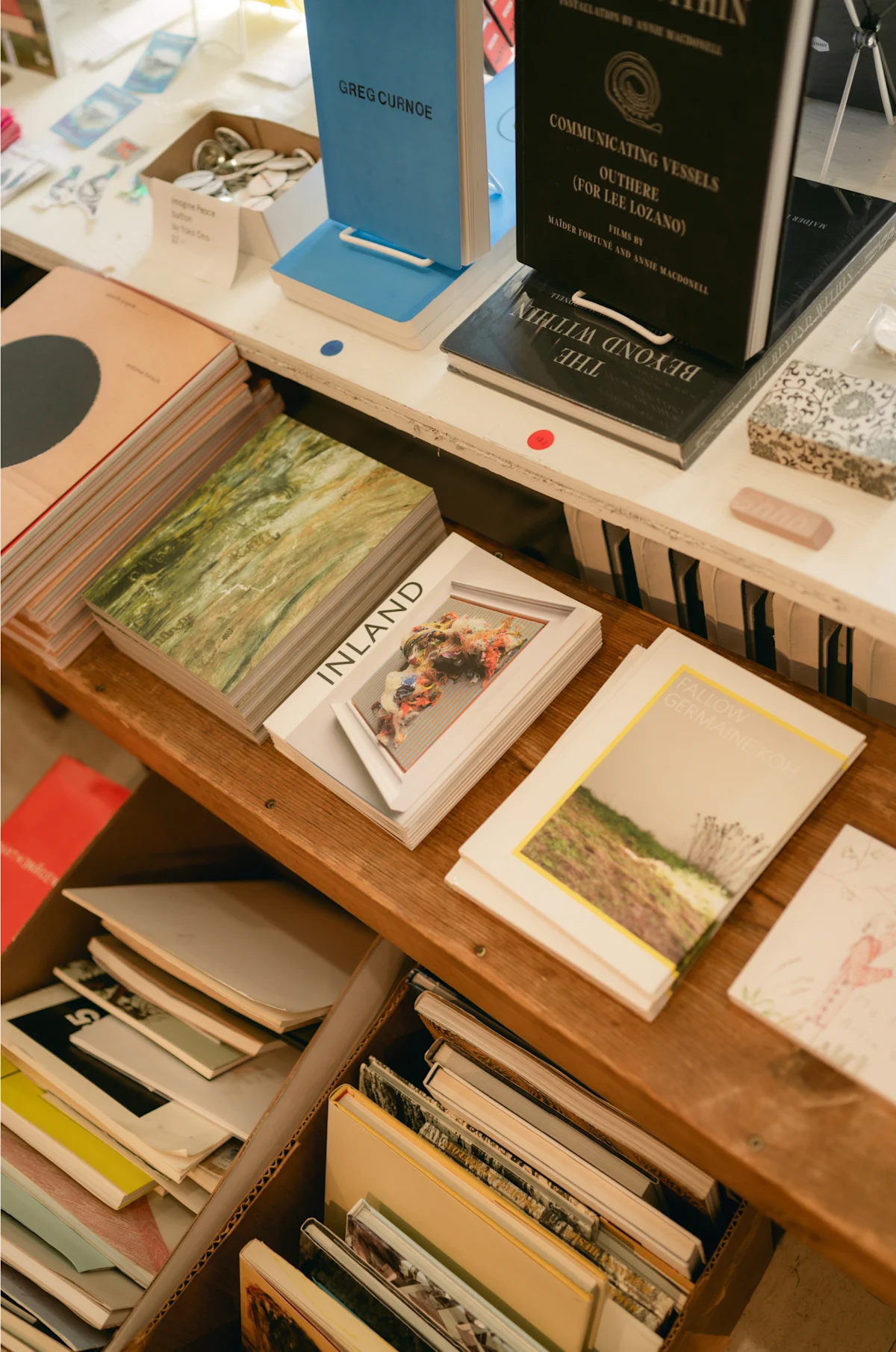
Were artist editions and multiples something that you were always interested in and gravitated towards?
⎯⎯⎯ I think so. I went to UofT and have an undergraduate degree in Visual Studies as well as English. So the connection between writing, art making, and artists who make books seemed like a very obvious path. I think editions and multiples were something that I found a lot more accessible than a lot of the art that I was seeing. I didn't take art in high school at all. I kind of fell into Visual Studies and art as a secondary degree because I was focused on this English degree at the time and had to transfer to UofT for various reasons. At that they were like, “you need to take a second major”. You need to do something else to get your degree”. So I chose art on a whim and ended up liking it a lot more. So not knowing a lot about art, I was going to places like Art Metropole as a student and being exposed to a lot of new ideas about what an artwork can be. That it could involve things you can take home with you, which was a new way of thinking about artwork.
Do you remember your first visit to Art Met, and what you encountered? Did you purchase anything?
⎯⎯⎯ My early memories of Art Metropole have always been about the sheer volume of material that is here and the kind of crate-diving vibe of the place. You could go in and spend an afternoon just looking through boxes and boxes of stuff that has also probably been here since the last twenty-five, thirty years. As a student, it was all new, but even now, I'll fulfill an online order sometimes and discover new things that I didn't know were here. There's over 16,000 inventory items. So there's a lot of stuff that's constantly new.
And that's part of the experience of Art Met for you? This constant discovery?
⎯⎯⎯ I think so. I feel like Art Met, because of its history, is constantly being rediscovered by its very nature. We get a lot of student groups coming in here for class visits and such, and it's fun to see them realizing the same things that I did when I first discovered Art Metropole, which is that there's just so much to look at, and so much to learn about. You can really do it at your own pace and, you know, $5 at a time.
That's a nice segue into the history of Art Met. It was founded by the artist collective General Idea in the 70s, correct?
⎯⎯⎯ Yeah. So October 28, 1974 is the first day of Art Metropole being open. It was founded by General Idea who at the time were publishing FILE Megazine which was their periodical. It had articles by artists, things about the art world, fun spoofs on LIFE magazine, and a lot of artist projects. Art Met kind of came out of the dialogues that were happening at the time with artist-run centres in Canada; the kind of mail art network that was happening; people sending these periodicals or other kinds of handmade things in the mail to each other. Art Met was started as a place to compile, document, and archive all of those materials that were being traded and sent across the country and internationally. Eventually, it opened as a place to house that stuff, but also display it and sell it and make exhibitions about it. That's sort of how it developed. Now, day to day, it looks a bit like a bookstore, and a bit like an exhibition space as well. We also do a lot of events, book launches, talks, and programs about this kind of material.
Was it intended as a commercial space in those early years? Or was it like, this is our launch pad for File magazine, and everything else was secondary?
⎯⎯⎯ I think the connection to FILE and General Idea was obviously a great jumping off point, but it quickly developed into its own thing. It also became quite a strong centre for videotape distribution in its early history, which was a completely new medium at the time, specifically in Canada, because the access to equipment was really expensive and hard to get your hands on. So it had a videotape distribution side and also a strong mail-order catalogue history. People would order these artists books, multiples, and videotapes by artists from our catalogue, which is a really, really interesting part of the history.
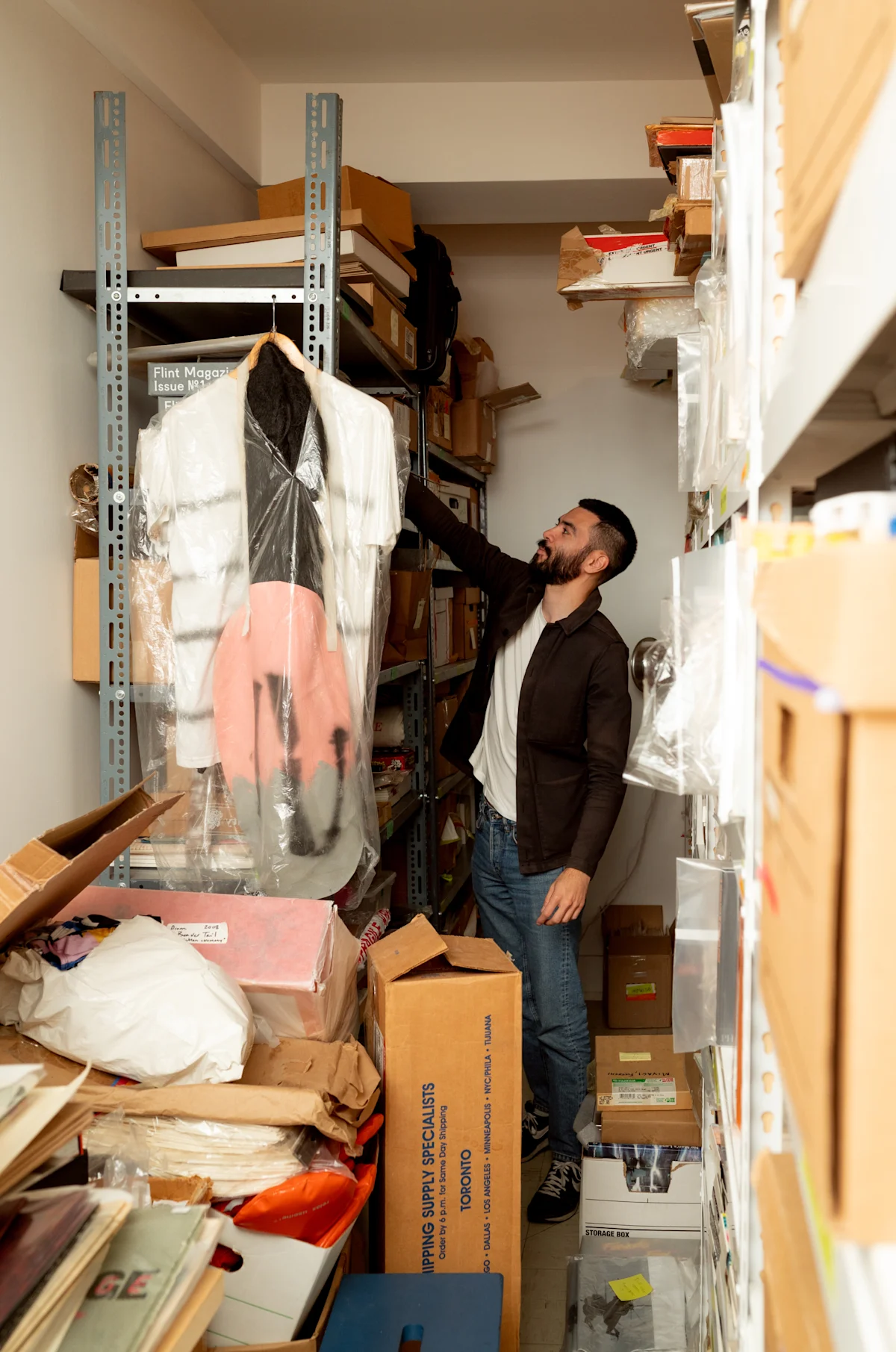
Was it something novel at the time that hadn't been done before?
⎯⎯⎯ Mail-order catalogues were definitely a part of other spheres of life. You know, you'd send away for a winter coat from Zellers or something, so maybe they're playing off of that as well. The idea of having a mail-order catalogue for artwork is very funny and interesting and also becomes an artwork in itself.
The distribution system itself has a life cycle similar to an artwork, in that it’s a form of cultural exchange.
⎯⎯⎯ As we’re approaching the fifty-year mark, and tracing the history of the organization and the material and books that it has produced and published – the artworks that have come and gone – things are coming back to us in very funny ways. There was someone who came and dropped off a bunch of Lawrence Weiner artist books recently. And he was like: “I bought these from you in the ‘80s and now I'm an old guy and I don't know what to do with them. I can't give them to my kids cause they don't know what the hell they are, so I'm just going to give them back to you. I've had my use with them. I've had thirty years of collecting this material.” They had the original receipts still in them too, and you can see how much he paid. Like, $8 for an artist book by Lawrence Weiner that now goes for, you know, several hundred dollars. So these materials kind of like end up having a life of their own.
You mentioned artist-run centres and I want to talk about what that means. Can you describe what an artist-run centre is, what it looks like, and what the organization system of that is?
⎯⎯⎯ So the artist-run centre is a sort of class of organization. It is basically an art gallery or an organization, usually a nonprofit, that is basically run by artists. So it depends on which one we’re talking about, but some of them have stipulations that, for example, 50% of the board needs to be a working artist or something like that. It basically started as a counter-movement to big museums and private galleries. It was sort of around the time in the ‘70s that artist collectives were becoming more prominent as well. Artists were working together as opposed to individually and setting up organizations and institutions for themselves. So the artist-run centres came out of that way of thinking and was a way of self-organizing.
Maybe there was a communal skepticism towards large institutions in the arts, and also a revolt against the singular artist genius mentality of the ‘50s and the commercialization of Pop Art in the ‘60s. So, the ‘70s were a time of burgeoning communal activity and connectivity. I'm wondering what your perspective is on why that was important for making art more accessible and available?
⎯⎯⎯ I think it makes it a lot more community-oriented, which is something I'm interested in. A lot of my own artistic practice and curatorial work has been very collaborative. For example, working with the plumb gallery and the shows that I've put on there. A lot of my projects independently are geared towards community and collaboration. I definitely feel a kinship towards the ethos of the ‘70s and these artist-run centres and artist collectives working together. Now more than ever, artist-run centres are critical. You can tell right now, there's a lot of faith being lost in large institutions, rightfully so, and artist-run centres, unfortunately, remain quite underfunded. The funding hasn't kept pace. And so I think artist-run centres are more important now than they ever have been because of that need for community as opposed to the singular institution or the singular artist.
Is it an advantage of the artist-run centres that they can evolve and change, as opposed to being more static, fixed, or hierarchical like an institution?
⎯⎯⎯ I think so. There's always staff and board working together in the best of times towards a singular vision, and, over time, that vision changes. Mail-order catalogues evolve into a website and online shopping. Our mandate always has a strong publishing side and a strong distribution side. So I think those things haven't changed, but the methods that have been used have changed, and change with people. There's been, fifty years on, so many different eras and different locations, so the physical qualities of the organization have changed a lot, and that is also reflected in the kind of programs that have been put on.
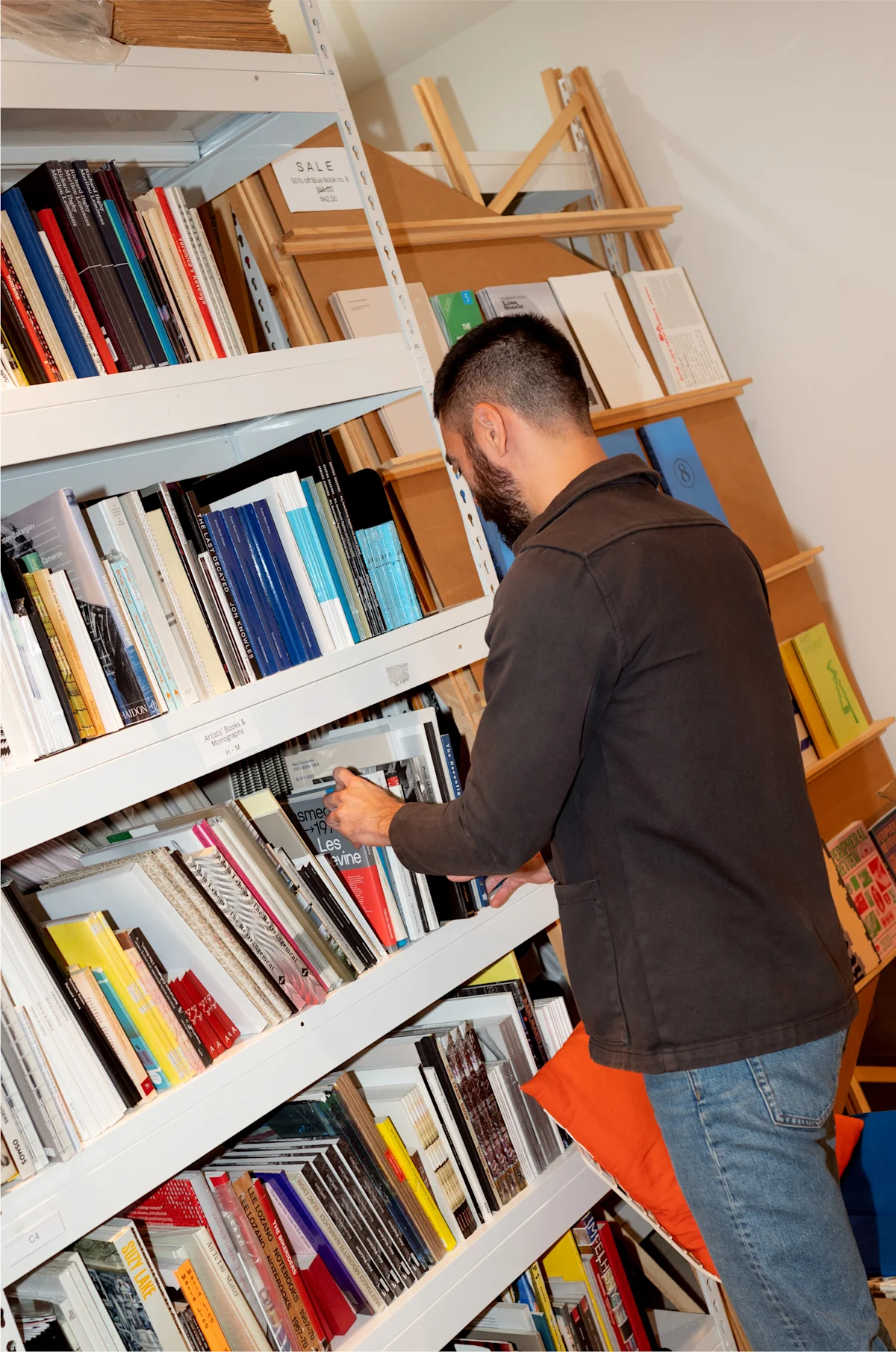
Can we talk a little bit about some pivotal points in the Art Met timeline that are indicative of its evolution?
⎯⎯⎯ Well, it started, very famously, on Yonge Street out of the back of General Idea’s studio, in this third floor walk-up. I think there's a stag shop next to it now, which, funnily enough, I noticed had a fifty year anniversary billboard next to it as I was walking by it the other day. My first encounter with Art Metropole was when it was on Dundas Street and Dufferin, which is not dissimilar from how it is right now. Basically a storefront on a main street. It had a very big window and they were doing a lot of window programming and very interesting projects with the space itself, which was really cool to see. There was a King Street location at one point, there was a Richmond Street location. A lot of people talk about King Street and have a lot of fondness for it.
I remember the King Street one. It was much darker and had more of a cavernous feeling, which was fun in its own way. It seems like every iteration after that has opted for more windows, a brighter space, and a more public facing storefront.
⎯⎯⎯ I sadly never went to the King street one. It was a bit before my time, which is maybe embarrassing to say how young I am, especially as a new director. But I think the vibes were strong at the King Street one, and I have heard a lot about how the community would always be hanging out at King Street and that it had an open door policy, which I'm very into as well.
In terms of that, of turning Art Met into a space where the community can congregate, is it just a matter of time, or is it about the design of the space, the location, or something else?
⎯⎯⎯ Yeah, I think it's a bit of that. I wouldn't call it a hangout space, but rather treating it as a place where people can feel like they belong to it, and it belongs to them. A place where we can have interesting programming that brings in a lot of different people and gives a strong sense of community as well. The space definitely helps with that. Being on College is great. We have a little backyard space as well, which we call a patio, but is basically a parking spot in an alley. We do a lot of book launches and talks out there in the summertime. So just fostering a welcoming atmosphere, I think, is important to me. Creating a social space goes hand-in-hand with the programming.
There are a few different aspects to Art Met, such as the distribution, the archiving, and the publishing, so can you lay out what those different branches are and how they all fit together?
⎯⎯⎯ Well, we obviously don't distribute VHS tapes anymore, too much.
[Laughs]
⎯⎯⎯ We do have a lot of that material in the archive, and we display it obviously. Like, there were a few videotapes that we had on display during our summer exhibition, which was fifty selected editions over the past fifty years representing the publishing side of Art Metropole. We showed artist editions, prints, multiples, and books that Art Met has published over the years, a lot of which have become quite rare. But they are also important early publications that contextualized artist books and multiples and what they were in the scope of wider art movements. So publishing has always been really important. I think it goes hand-in-hand with the distribution side of Art Metropole. Making a thing and getting it into the world are two sides of the same coin.
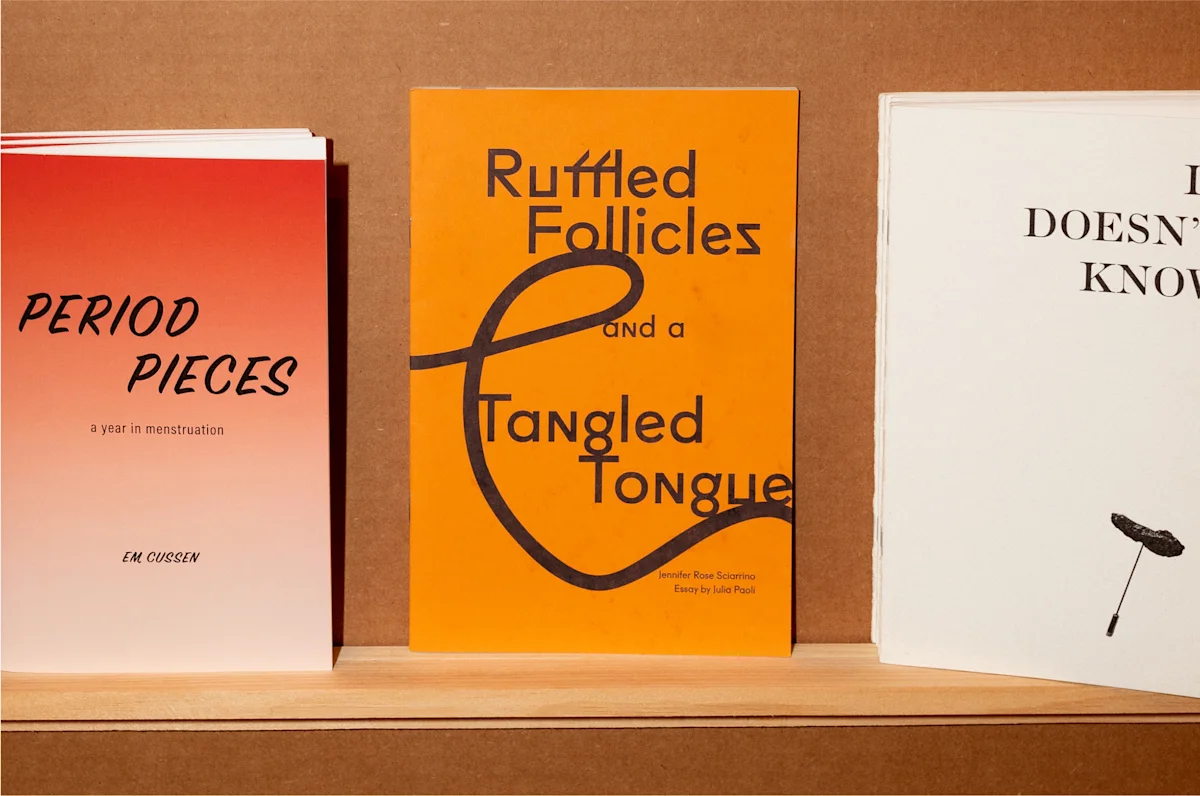
You also bring in lots of works from other publishers around the world.
⎯⎯⎯ Totally. I mean, it's also about maintaining strong connections to international publishers, artists, small presses, and people who make weird little handmade one-off things. We do a lot of art fairs as well. We go to art book fairs in New York and LA and even farther than that, like Tokyo and Mexico City and Basel. We always try to bring back as much as we can carry essentially, because being connected to those makers out there is really important. We do a lot of looking at stuff and emailing people to say, “Hey, can you give us five copies of your zine? Because we found it on Instagram and it looks really awesome.”
I guess it blends together well. Selling it in the storefront does naturally lead to it joining the inventory to be distributed. Do you keep some of it for the archive?
⎯⎯⎯ We don't keep everything. When Art Met started, the articles of incorporation say something about being mandated to document and distribute “all of the images”, so we try to do as much as we can, but keeping one of everything is a bit tough, especially because there's so much material that comes and goes through the doors. But things that we find particularly relevant or interesting we might keep one copy of. A lot of the stuff is on consignment here and it's pretty much an open door policy, as long as it is relevant to contemporary art in some way or has some sort of visual aspect, or engages with the book as an artwork in some form. Lots of people will come in just off the street and say, “I have this zine that I just made and I don't know what to do with it.” And we'll say, “Yeah, do you want to sell it here for five bucks?”
So could the readers of this article come in with their homemade publication, without any preamble, without any vetting or prerequisites?
⎯⎯⎯ Exactly. That's one of the things that keeps Art Metropole interesting, as well as the material that we have in the shop and that we put on display. It's not like a normal bookstore in that way. A lot of the stuff you can't make economically viable when you're making five of a thing. Or even one of it.
That segues into what Art Met signifies for the greater Toronto art community.
⎯⎯⎯ I think one of its strong suits is that it has always been a community hub. I know that there were rumours of a standing Friday night drinks in the back of Art Metropole that I sadly never went to, but I think that was always a thing that was known to the community to be like: if you’re ever bored or want someone to just hang out with and shoot the shit about this very particular kind of stuff, you can always come to Art Met. That still happens to some extent, like when I’m in the shop and just doing shop stuff, people come in and hang out, and it's great. That role as a community hub is really nice, especially when we're an entryway for a lot of young artists and students into this kind of material. The older established artists are here as well as younger students who want to know more about the art scene. I think they can all come to Art Metropole and learn from each other.
Do you think that there's the same level of awareness of Art Met as there was in previous decades?
⎯⎯⎯ It's a good question. Certainly, with the 50th anniversary this year, we're trying to do a lot of celebration and promotion, and also just looking back at the history. We're doing a few programs this fall and into next year that are specifically about Art Met’s publishing history and its activities. Kind of recontextualizing them. So this series that we've launched, it's called Reactivating the Archive. It’s a series of speakers, artists, curators, writers, etc. speaking about one book or object in the Art Metropole collection. I thought it was a great idea, until I discovered it had already been done in the ‘90s and it was called Activating the Archive. So we're like, okay, let's do this for the 50th anniversary context, which is not the same thing. But it does have the same inspiration, which is to look back at Art Metropole and celebrate and rediscover what has been done.
We’ve been talking a lot about changes and evolution, and what stays the same, so during your tenure here, what are you looking forward to, and is there a big risk that you want to take or something you’d like to see happen?
⎯⎯⎯ Well, there's lots to do around the anniversary for sure. That's my main focus right now. I’m treating it as an opportunity to look back on the past fifty years and rediscover it with new eyes, but also use it as a learning moment and seeing what’s in store for the future. We’re about to launch a new series of artist books, sort of in between an artist book and a monograph for emerging artists. Art Met has always really been great at bridging local and international communities, as well as younger emerging artists and established artists. So I think that's something I want to continue to do, but in a way that hopefully gives young artists the chance to make their first artist book, and commission some more established voices to write about their practice, for example. So, that is one project that I'm pretty excited about.
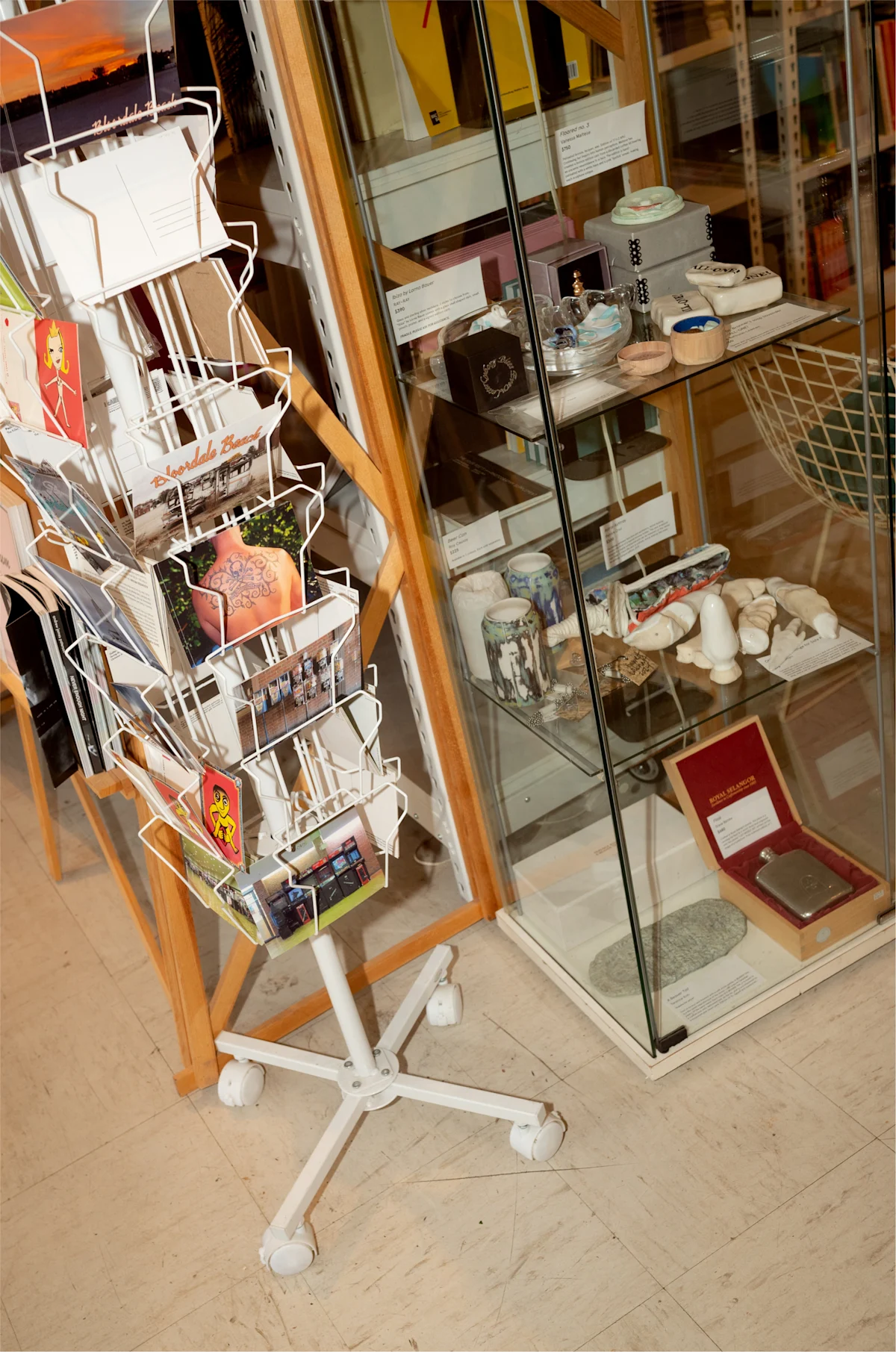
Does that involve prompting artists or is it more open? What's your approach?
⎯⎯⎯ A bit of both. I think a lot of the publishing that Art Met has done in more recent years has been co-publishing projects with folks bringing projects to us, which has been really great. Especially as a way for us to provide a platform for these projects that might not have gotten wider distribution without our help or participation. But for this one, maybe it's a bit more proactive and will involve reaching out to artists who have practices that interact with text or books.
Do you envision reinforcing the network of Toronto artist-run centres and art spaces in Toronto?
⎯⎯⎯ It's always great to work together with artist-run centres and other organizations doing similar things or with similar minds. I think every organization in Toronto is struggling to some degree right now, so it's good to build a network and collaborate with each other, especially when support structures are kind of dwindling outside of that network.
Are you optimistic about the future? Is it looking stronger?
⎯⎯⎯ I think with that in mind, yes. Because there's so little support for artist-run centres and organizations, it really depends on the community to step up and play their part in whatever way they can. If that looks like coming to a book launch at Art Metropole and buying a copy of a book, then that's great. All I could ask for is for people to show up and care about what's happening in their community and support artists and art institutions.
The 50th anniversary is a good opportunity to do that.
⎯⎯⎯ It's a great opportunity to do that, and we're very excited about the partnership with East Room and their collaboration. They're a space that can bring a lot of support and community to us, and bridging our communities is very important. The party itself will also be really fun. We're doing this lucky draw, which is a way to engage artists that is more Art Met’s style. It's a lot more exciting. A lot of participating artists have been involved with Art Metropole in some way, so creating that list has been another way to celebrate Art Met’s history.
Are you releasing anything really special from the archive back into the world?
⎯⎯⎯ We’ll see. We might be.
– East Room is a shared workspace company providing design-forward office solutions, authentic programming and a diverse community to established companies and enterprising freelancers. We explore art, design, music, and entrepreneurship. Visit our News & Stories page to read more.